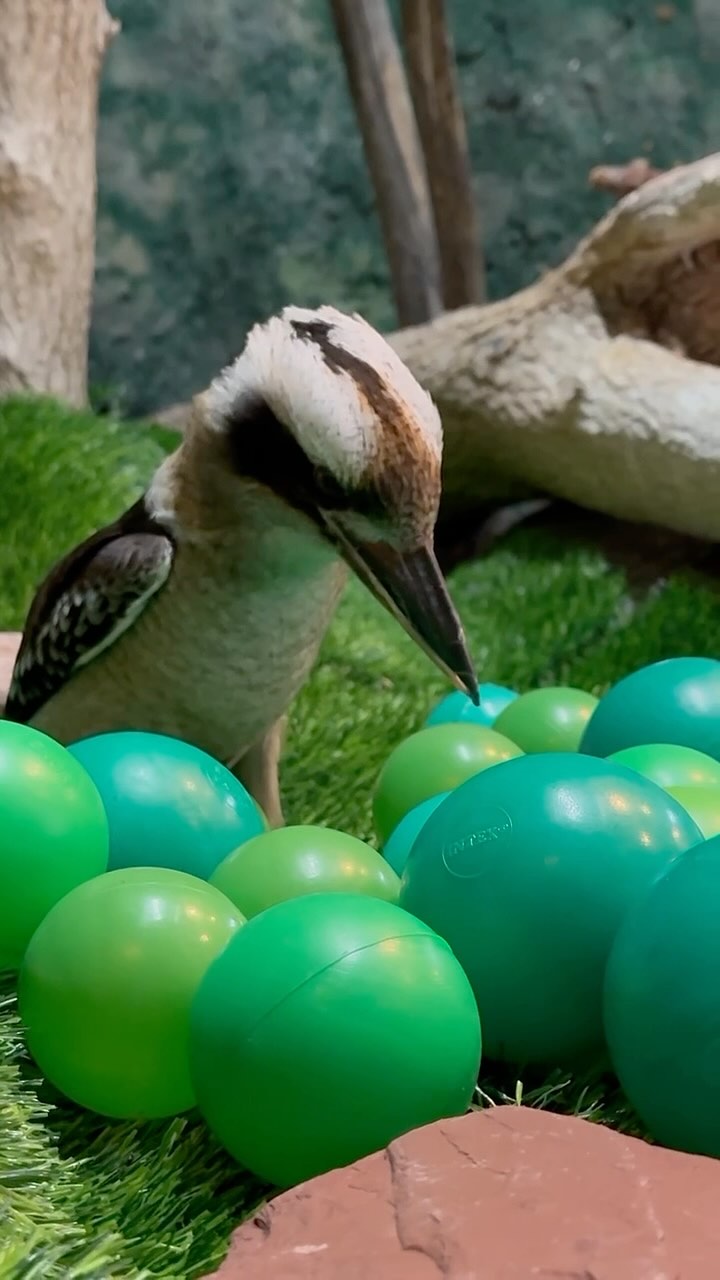- Explore the distinct characteristics and significance of the kookaburra’s call in the wild.
- Discuss the relevance and benefits of animal enrichment activities in a zoo setting.
- Highlight the impact of St. Patrick’s Day-themed foraging enrichment on animals like Irwin.
- Delve into the role of zoos in conservation and the educational value they provide.
- Examine the challenges and opportunities in maintaining the well-being of wildlife in captivity.
Kookaburras are iconic birds primarily known for their distinctive call, often reminiscent of hearty human laughter. This sound is not just a charming auditory signature but serves functional purposes in their natural habitat. Kookaburras utilize their vocalizations to communicate with members of their social group and establish territory. In the wild, their call is critical for maintaining social order and ensuring environmental security. Understanding these acoustic phenomena sheds light on the importance of preserving natural behaviors in captive settings.
The unique call of the kookaburra captures attention and curiosity, providing both entertainment and educational opportunities. It creates a gateway for discussions about avian communication and adaptation, making it an excellent teaching tool in zoos and wildlife parks. By mimicking their environment more closely, zoos can create experiences that are both engaging for visitors and enriching for the animals themselves.
In zoo settings, enrichment activities serve vital roles in simulating aspects of the wild that are otherwise missing. This includes both physical and mental stimulation, important for fulfilling the natural behaviors of animals. Activities designed for enrichment often incorporate naturalistic challenges. For example, introducing hidden food items within a habitat encourages foraging behaviors that are essential for the mental health and engagement of captive animals. This is particularly significant in the case of birds like Irwin, the kookaburra, who thrives on such activities.
Themed enrichment activities based on cultural events, such as St. Patrick’s Day, offer additional layers of complexity and engagement. These activities can include color-themed food items or hidden ‘treasures’ that require birds to use their problem-solving skills. The engagement in these exercises shows marked improvement in animals’ active behavior and contentment. Foraging enrichments rooted in special themes serve to break the monotony and provide animals with a stimulating, albeit non-native, experience that keeps their natural instincts sharp.
Zoos have evolved significantly since their inception, becoming centers for conservation and education. Their role in preserving endangered species and offering educational resources to the public cannot be overstated. By engaging visitors with interactive exhibits and narratives, zoos underscore their commitment to animal welfare and environmental awareness. They become platforms from which to discuss broader conservation issues, influencing future generations to value and protect wildlife.
Educators and zoo handlers use events and animal interactions to impart valuable lessons about the interconnectedness of ecosystems and the symbiotic relationships within them. Instilling knowledge in visitors concerning wildlife biology and conservation fosters a conducive environment for long-term ecological stewardship.
Nevertheless, maintaining wildlife in captivity is fraught with challenges. Key among these is providing an environment that adequately meets their biological and psychological needs. It involves creating settings that resemble the wild as closely as possible while ensuring the utmost care and well-being of the animals. Understanding animal behaviors and needs forms the backbone of successful zoo management strategies. Continually adapting these to new research and methodologies enhances animal welfare.
Zoos face the ongoing challenge of balancing educational outreach with ethical considerations around captivity. Prioritizing animal welfare while expanding conservation efforts remains an integral focus. Measures implemented to achieve this include ongoing research, habitat improvement projects, and partnerships with conservation organizations.
Opportunities for zoos lie in their potential to influence public perception and behavior regarding wildlife conservation. By showcasing native and exotic species and the critical role they play in our ecosystems, zoos provide a unique blend of education and entertainment that fosters awareness and action—crucial for conservation success.
In conclusion, intriguing aspects like Irwin’s classic kookaburra call and foraging enrichment activities reveal much about the relationship between wildlife and human-managed environments. Recognizing the importance of natural behaviors and their preservation within zoo settings is essential for the continued success of these institutions as pillars of conservation and education. For zoo-goers, these insights not only enhance their experience but also encourage them to take an active role in supporting wildlife just as zoos support animals like Irwin. Through conscientious and informed practices, zoos contribute substantially to the broader conversation on wildlife conservation, emphasizing respect and understanding of the natural world.
*****
Source Description
🍀🦜Can you hear it? Listen closely for Irwin’s classic kookaburra call AND see how much he loved his St. Paddy’s Day foraging enrichment! 🟢✨🍀😋


